Tsukushi-no-en-teien (Garden of Horsetails)
The Garden of Horsetails is expansive.
Designated as a National Place of Scenic Beauty, it is noted for its black pines, Japanese white pines, maples, and red-blossomed plum trees, as well as for narrow, meandering streams that flow gently between them.

Tsukushi-no-en (Corridor of Horsetails)
- A veranda without pillars -
Horsetails are painted on sliding screens along this veranda, which is called "The Corridor of Horsetails."
The hallway has been constructed in the "Nightingale style," a floor design that produces a chirping sound when walked upon, deterring any would-be intruders. The veranda, at a length of 20 meters, offers open views of the garden and has no supporting beams holding up the roof.
The eaves are supported instead with a structure called a "hanegi," which operates like a lever and is a major feature of the Seisonkaku.
Matsu-no-ma (Pine room)
This room was intended for viewing the Garden of Horsetails during periods of relaxation.
Pine trees are painted on sliding screens here, and in the drawing room birds and flowers are represented with inlaid glass imported from Holland, along with paintings of small European birds and plants.
In the "tokonoma" alcove, the middle portion of the columns has been cut out.
Glasswork
Birds and flowers are represented with inlaid glass imported from Holland, along with paintings of small European birds and plants.